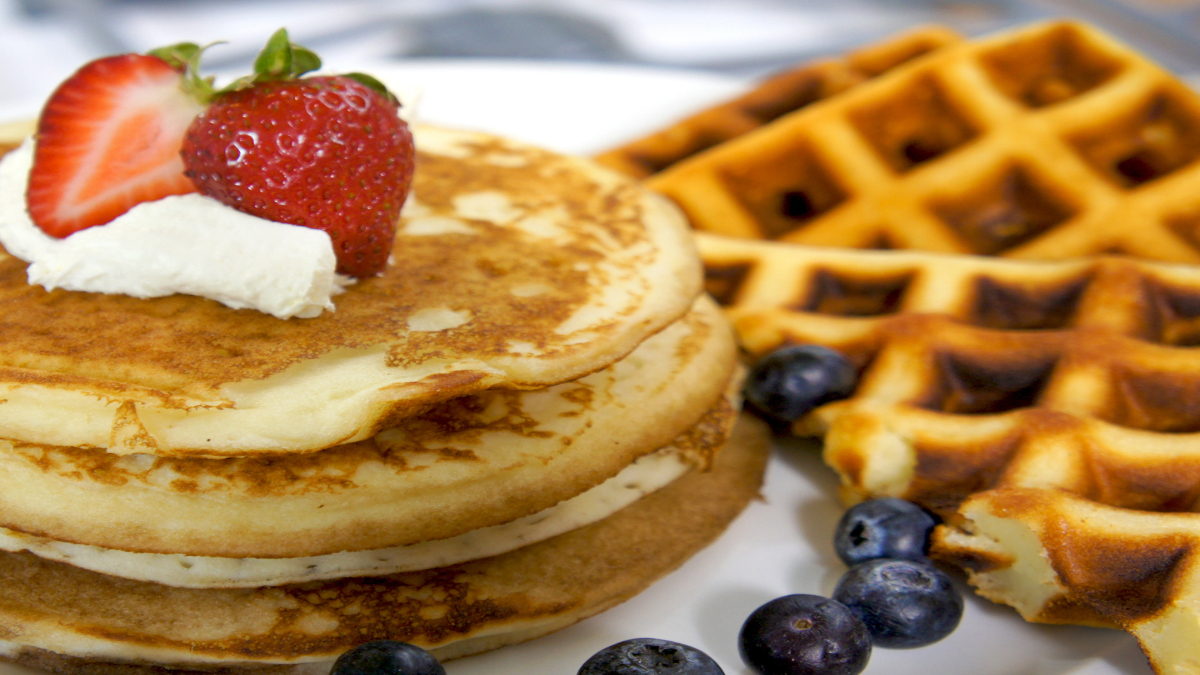
Advertisement
Waffles and pancakes, two beloved breakfast items, share a common heritage and similar base ingredients, yet they possess distinctive characteristics that set them apart. These delicious treats often spark the debate: Are waffles and pancakes essentially the same, or do they differ significantly beyond their shape? Let’s explore the nuances that distinguish these breakfast classics.
The Ingredients:
Both waffles and pancakes typically share basic ingredients:
- Flour: A staple ingredient forming the base of both batters. While all-purpose flour is commonly used, variations can include whole-grain or specialty flours.
- Eggs: Provide structure and richness to the batter in both waffles and pancakes.
- Milk: Adds moisture and helps attain the desired consistency in the batter. Variations in milk types, such as cow’s milk or plant-based alternatives, are common.
- Leavening Agents: Baking powder or baking soda creates the rise and fluffiness in both waffle and pancake batters.
- Fat: Butter or oil adds richness and helps prevent sticking to cooking surfaces for both pancakes and waffles.
The Texture and Preparation:
One of the primary distinctions between waffles and pancakes lies in their texture and the method of preparation:
- Texture: Waffles are known for their distinct grid-patterned, crisp exterior with a fluffy interior. This is achieved through the waffle iron’s grid pattern, creating a crispy surface while maintaining a soft, airy inside. Pancakes, on the other hand, are typically flat, soft, and more uniform in texture throughout.
- Preparation: Waffles require a specialized appliance, the waffle iron, which cooks the batter evenly and creates the characteristic grid pattern. Pancakes are cooked on a flat surface such as a griddle or frying pan, without the need for specific patterns or molds.
Cooking Time and Techniques:
Waffles and pancakes also differ in their cooking times and techniques:
- Cooking Time: Waffles generally take longer to cook due to the specific nature of the waffle iron, allowing for the crisp exterior to form while ensuring the inside remains fluffy. Pancakes cook relatively quickly on a flat surface, requiring just a flip to ensure even cooking.
Serving and Toppings:
While both waffles and pancakes are versatile in their serving options, there are some customary preferences:
- Toppings: Waffles’ larger surface area and grid pattern make them ideal for holding toppings within their squares, such as syrup, fruit compotes, or whipped cream. Pancakes, being flat, often have toppings poured over the entire surface, allowing for a more even distribution.
In essence, while waffles and pancakes share a common foundation in their base ingredients, their distinctive textures, preparation methods, and the equipment used set them apart. Waffles boast a crispy exterior with a soft interior, thanks to their specialized cooking appliance, while pancakes offer a more uniform, fluffy texture cooked on a flat surface.
Ultimately, whether you’re a fan of the crispy grids of waffles or the fluffy simplicity of pancakes, both breakfast classics have their unique appeal, inviting us to savor and enjoy them in their own distinct ways. The differences between waffles and pancakes lie not only in their appearance but also in the experiences they offer, making them perennial favorites in the realm of breakfast delights.
